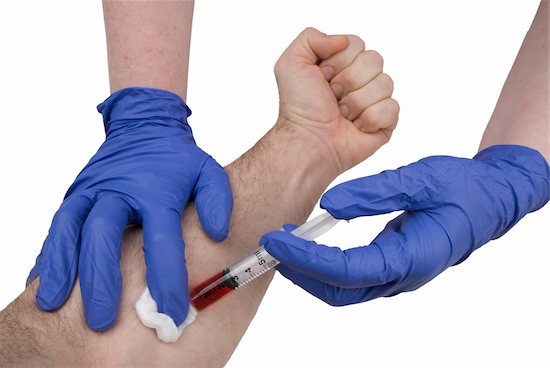ADMIN
(0 comments, 229 posts)
This user hasn't shared any profile information
Posts by ADMIN

HIV Breakthrough Deciphers the Structure of the Virus
There is one question that has eluded scientists for so many years. How does HIV integrate into human host DNA and replicate in the body? More than a decade later, researchers have found the answer. An HIV breakthrough at the Salk Institute has deciphered the structure of HIV machinery.
Intasome: The Machinery Making Trouble
HIV intasome is a large molecular machine that adds viral DNA into the genomes of its host. This machinery is responsible for HIV’s elusive nature and its ability to hide within the body.
According to Dmitry Lyumkis, senior author, and fellow at the Salk Institute: “HIV is a clever virus and has learned to evade even some of the best drugs on the market. Understanding the mechanisms of viral escape and developing more broadly applicable drugs will be a major direction in the future.”
Scientists have come up with a way to combat intasome before by using a drug called integrase strand transfer inhibitors (INSTIs). It is approved to treat the virus in both the U.S. and Europe. However, the drugs and HIV machinery are a bit of a conundrum. Without being able to study intasome on the atomic level, the drug’s effects are not as powerful as it should be, leaving scientist stumped on how it should work.
How This HIV Breakthrough Was Made
New technology allows us to do better things. The same is true within the scientific community. The state-of-the-art imaging technique called the single-particle cryo-electron microscopy (cryo-EM) gave researchers the ability to image large, complex and dynamic molecules. Basically, they were able to see intasome structure clearly.
The molecular machine is composed of a four-part core but has many other complex parts to it. The researchers believe that this allows it to gain access to the cell’s nucleus through active transport instead of waiting for the cell to divide. Lyumkis calls for understanding each of these parts a bit more to combat the disease.

Antiretroviral Drugs for HIV Link to Neurological Issues
In the fight against HIV, antiretroviral drugs are the strongest weapon we have. While these medications do not cure or kill the virus, they stop it from progressing any further. Unfortunately, this treatment is a combination of several different types of drugs. When combined, they slow down HIV. However, according to new research, they may also leave significant neurological damage.
The Risks of Antiretroviral Drugs
Like most drugs for serious conditions, antiretroviral drugs do have side effects. However, their ability to stop the progression of HIV to AIDS has outweighed any minor complications. To this day, they are so successful that patients with AIDS are a rarity.
Some patients have been known to experience appetite loss, lipodystrophy, diarrhea, fatigue, mood changes, nausea, and bone loss. Scientists are working to make these drugs stronger and safer for patients. With the right precautions, patients can even make the side effects less debilitating.
The Connection to Alzheimer’s Disease
At the University of Pennsylvania, research has implicated some antiretroviral drugs in the progress of Alzheimer’s disease. They suggest that protease inhibitors are the cause. Protease inhibitors are the drugs that work the best against HIV. Apparently, some of these drugs promote the growth of the peptide beta-amyloid, which damages neurons.
“Protease inhibitors are very effective antiviral therapies, but they do have inherent toxicities,” said Kelly Jordan-Sciutto, senior author on the study. “Our findings may cause us to rethink how we’re using these drugs and even consider developing an adjunctive therapy to reduce some of these negative effects.”
Through testing, they were able to identify that the drugs did indeed cause the reaction and damage to the neurons. However, they are working to inhibit the enzyme called BACE1, which leads to the production of the beta-amyloid.
“Targeting PERK and/or BACE1 could help contribute to a therapeutic approach to treat drug-associated cognitive disorders.” said Jordan-Sciutto.

Heart Attack: HIV Patients at Nearly Double the Risk
Other than the brain, the heart is one of the most important organs in our body. It happens to also be a target for viruses like HIV. HIV positive individuals need to take caution and check on their heart regularly. A study shows that the risk for heart attack is much greater in those troubled by this disease.
Predicting Heart Attack Risk
The heart is vulnerable in America. At least, that is what the statistics say. Here are the facts that the CDC found:
- Every 43 seconds, someone in the United States has a heart attack.
- Every year, 735,000 Americans have a heart attack.
- Of those American, 525,00 are experiencing their first attack and 210,000 have experienced one before.
- One of 5 heart attacks is silent. This means that the patient is not aware it is happening but still suffers damage to the body.
These are truly awful facts. But what the scientists at the Northwestern University Feinberg School of Medicine have found may spell worse trouble for HIV patients. They are almost twice as likely to suffer from a heart attack, which more than what physicians have predicted for the general population.
Predicting the risk of heart attack is important. If a doctor discovers it early on, they can prescribe the right medicine to lower the risk. “If you have a higher risk for heart attack or stroke, your ability to benefit from one of these drugs is greater and justifies the possible side effects of a medication,” says Dr. Matthew Feinstein, cardiovascular disease fellow at Northwestern University.
Dr. Feinstein goes on to state that HIV increases heart risk by causing chronic inflammation, which can lead to plaque buildup in the body’s tissue. Eventually, this series of events in your body can lead to heart attack or stroke.
The current predictor tools for heart risk need to be adjusted. Heart medications are only given to those in serious need. If physicians cannot accurately tell if HIV patients need those medications, this will lead to dangerous consequences.

Beware of Dangerous ‘Shock and Kill’ Treatment for HIV
Finding effective treatment for HIV is a long-standing battle. Scientists are fighting against the disease every day. The search for answers may lead to drastic measures. However, at what point do the risk outweigh the cure? That’s the question posed by researchers at the Johns Hopkins University of Medicine when it comes to the ‘shock and kill’ treatment.
What is the ‘Shock and Kill’ Treatment for HIV?
The shock-and-kill treatment reveals HIV hidden within the cells. This is the problem that many scientists run into – HIV hides. When it is dormant, the virus does not trigger the immune system to fight back. It’s also the reason that antiretroviral therapies are only capable of keeping the disease at bay.
The proposed shock-and-kill treatment essentially wakes HIV from its dormant state to make it vulnerable to the immune system and antiretroviral drugs. However, testing this method has led scientists to believe the supposed ‘cure’ could have disastrous results.
The treatment was tested on the simian immunodeficiency virus (SIV), a disease that is found in primates and is very much similar to HIV. One of the test subjects displayed encephalitis symptoms and brain inflammation. The symptoms only worsened and the primate had to be put down humanely.
This treatment spells trouble if the disease is hiding within the brain. Activation in this area only makes a patient’s condition worse, especially when scientists do not know where the disease is hiding to begin with. Researchers advise caution.
“The potential for the brain to harbor significant HIV reservoirs that could pose a danger if activated hasn’t received much attention in the HIV eradication field,” says Janice Clements, Ph.D., professor of molecular and comparative pathobiology at the Johns Hopkins University School of Medicine. “Our study sounds a major cautionary note about the potential for unintended consequences of the shock-and-kill treatment strategy.”

Assessing the Average Life Expectancy With HIV
Studies have shown how a patient’s life expectancy with HIV has gotten better over the past 20 years. A lot of progress has been made. Researchers have found breakthrough treatment methods. And treatment itself has gotten more readily available.
It’s now well known that HIV is no longer a death march. Patients are now able to live fuller lives compared to previous decades. But how much longer are they expected to live for? And what factors lead to such vast improvements? Let’s take a closer look at that right now.
Life Expectancy With HIV Over The Years
From 1996-97, the death rate for HIV-positive people was at 7%. For people diagnosed with HIV, their average life span was typically 10 years. For 20-year-olds with the virus, it was higher. On average, they lived until 39. These numbers are now significantly better.
By 2006, that number jumped to 24 years. More than double the average from a decade previous. And a 20-year-old with HIV lived until 56 on average. That number is now in the high 60s. That leaves a separation of about 13 years between an HIV-positive and HIV-negative 20-year-old.
That’s the smallest gap in life expectancy between the two parties to date. It goes to show how far we’ve come in two decades. But that there’s still work to be done.
How Life Expectancy Has Improved
Antiretroviral Therapy (ART) was not yet readily available in 1996. That’s changed over the past two decades. As a result of there being easier access ART, it revolutionized HIV treatment. By preventing the virus from reproducing, ART is able to lower the viral load in the bloodstream. When successful, the viral load is so low that the virus is undetectable. HIV is still there. And it can still be spread to someone else. But there aren’t any symptoms.
Treatment is more effective across the board. Over half of those eligible for treatment are now receiving it. Also, Linkage to Care numbers continues to increase. The necessary work is being done.
In addition to being more effective, HIV treatment is now simpler, too. Fewer pills are needed. And there’s no longer a complex schedule to follow. A lot of patients can now take one pill a day and be fine. They work for a longer period of time and have fewer side-effects. It’s less likely for a patient to have to switch medications periodically.





